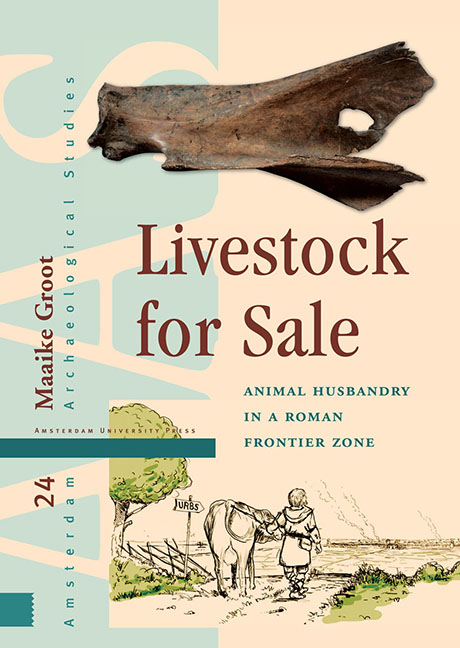Book contents
Summary
FOOD SUPPLY
In the last decades B.C., the Roman army became a permanent presence in the Netherlands. Initially, food supply relied strongly on pigs, which were either bred by the army locally or arrived through military supply lines. Cattle seem to have been requisitioned locally, although some may also have come from further away. Since the local farmers were not yet used to producing surplus food, it was not possible for the army to rely on local supply completely. A similar food supply strategy is seen in other early military sites, such as Dangstetten and Velsen, where pig is also the most common species. In contrast to this, in the early fort of Alchester (UK), the species spectrum, slaughter ages and size of livestock suggest local procurement. This first stage did not last long. Cattle soon became increasingly important for military meat consumption, and there is now evidence for the import of cattle as well as the provisioning with local livestock. Consumers` dietary preference can be seen in the slightly higher proportion of pigs in military sites.
From the early 1st century A.D., Nijmegen developed as an urban as well as a military centre. This resulted in another group of consumers that needed to be fed. Cattle provided most of the meat consumed in the town. In the Early Roman period, pig is the second species. Perhaps these pigs were raised in the town, as has been suggested for other regions. In the early Middle Roman period, sheep or goat is the second species, which can either be explained by availability or dietary preference of urban people.
The increasing numbers of imported pottery and other material culture found in rural settlements, especially from the late 1st century onwards, suggests that the supply of livestock to the army and town was not a one-way process, and that the farmers benefited. The town of Nijmegen must have been an important market place for the surrounding region. Inhabitants from rural settlements in the Dutch River Area brought their surplus produce and animals here. The animals were transported on the hoof and slaughtered in the town. Army representatives could have bought cattle here, or have travelled to the rural settlements.
- Type
- Chapter
- Information
- Livestock for SaleAnimal Husbandry in a Roman Frontier Zone, pp. 221 - 228Publisher: Amsterdam University PressPrint publication year: 2016



